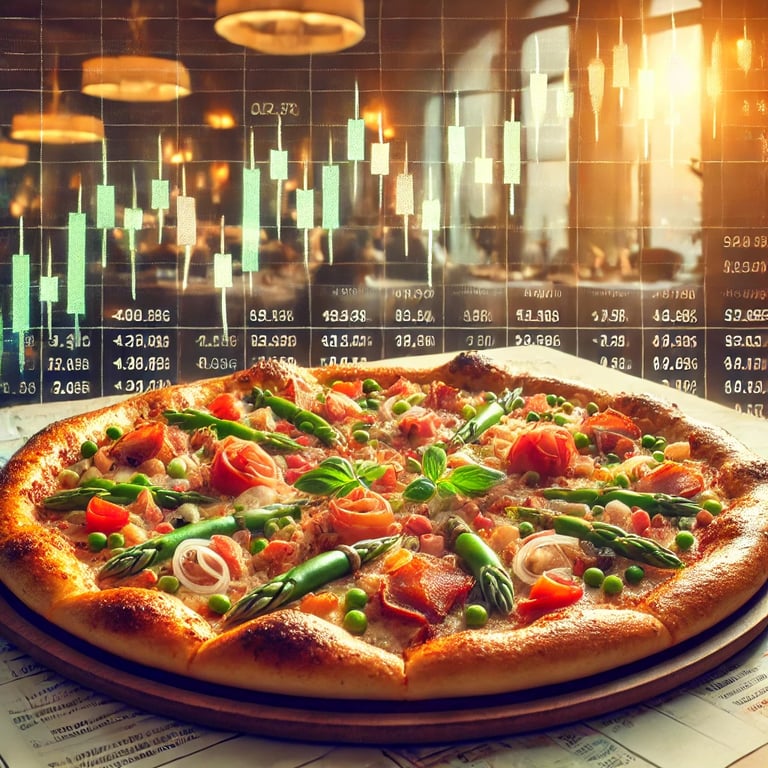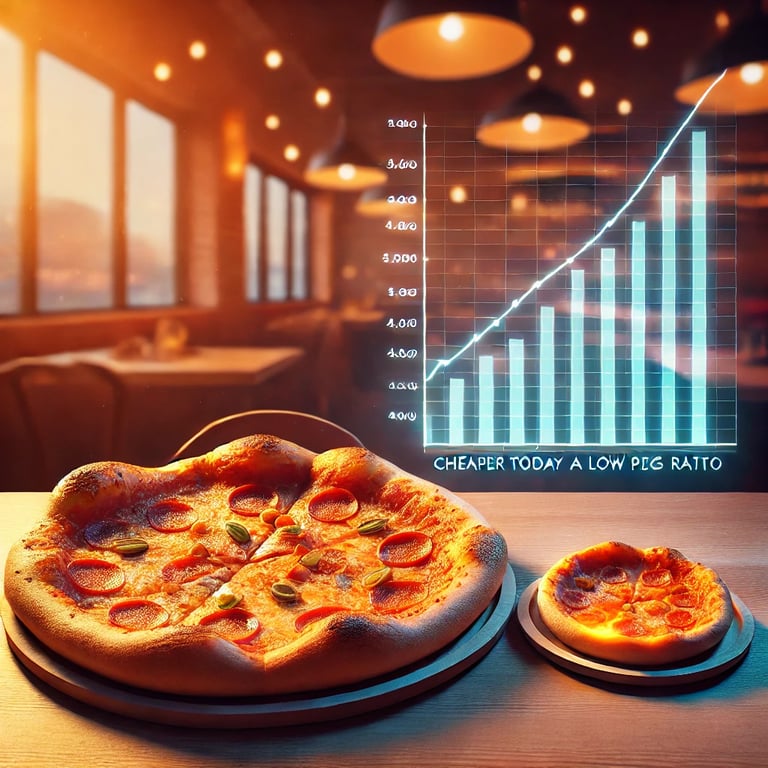The Pizza Dilemma: Understanding the Stock Market with 'PEG Ratio'
Ever had to choose between two pizza deals and felt like a stock market analyst? No? Well, let’s change that!!
Arjun K A
3/22/20253 min read


The Pizza Dilemma: Understanding the Stock Market with PEG Ratio
Introduction
Ever had to choose between two pizza deals and felt like a stock market analyst? No? Well, let’s change that! Imagine Ravi and Ananya at their favorite pizza joint, debating the best deal:
Deal 1: A large pizza for ₹500.
Deal 2: A medium pizza for ₹300, but with an offer—“20% bigger size next time!”
Ravi quickly picks the large pizza, believing bigger is better. Ananya, on the other hand, considers the future value of the medium pizza with growth. Their investor friend, Karan, grins and says, “You guys just explained the PEG ratio—but for stocks!”
What is the PEG Ratio? 📊
The PEG (Price/Earnings to Growth) Ratio helps investors determine if a stock is fairly valued by considering both its P/E ratio (Price-to-Earnings) and its earnings growth rate. The formula:
PEG Ratio = (P/E Ratio) ÷ (Earnings Growth Rate)
A lower PEG (below 1) suggests the stock is undervalued compared to its growth potential.
A PEG of 1 suggests the stock is fairly valued.
A higher PEG (above 1) may indicate overvaluation.
Pizza vs. Stocks: The Perfect Analogy 🍕💹
1. The Large Pizza (Deal 1) = High P/E Stock
This is like a stock with a high P/E ratio—expensive, but offering immediate value.
Just like Ravi pays more upfront for the large pizza, investors pay a premium for well-established, high-value stocks (like blue-chip companies).
Risk? If the pizza isn’t as good as expected (or the company’s earnings don’t justify the high P/E), it’s a bad deal!
👉 Example: A tech stock with a P/E of 50 but only 10% earnings growth has a PEG of 5—possibly overvalued.
2. The Medium Pizza with Growth (Deal 2) = Low PEG Stock
This is like a stock with a low PEG ratio—cheaper today but increasing in value over time.
Ananya’s choice makes sense because she gets a better deal in the long run, just like investors benefit from undervalued growth stocks.
Risk? The pizza place must deliver on its promise—just like the company must meet its growth expectations.
👉 Example: A stock with a P/E of 10 and 15% growth rate has a PEG of 0.67—a potential undervalued gem!
When PEG Works and When It Doesn’t ⚠️
✅ PEG Works Well For:
Growth stocks in stable industries (ex: Tech, FMCG, Pharma)
Comparing companies in the same sector
Identifying undervalued stocks with strong future potential
❌ PEG Can Be Misleading For:
Cyclical stocks (like steel, oil, and commodities) where earnings fluctuate heavily
Companies with inconsistent earnings growth
Stocks in industries with disruptive innovation, where growth projections are unpredictable.
Final Thoughts: Investing Like a Pizza Pro! 🍕💰
Next time you analyze a stock, think of it like choosing a pizza deal:
Are you paying a fair price for the future growth you’re getting?
Is the stock overhyped like an overpriced pizza, or is it a hidden gem waiting to grow?
Just like Ravi and Ananya’s debate, investing isn’t about just picking the biggest or cheapest stock—it’s about picking the one that gives the best value over time!
So, are you team Large Pizza (High P/E) 🍕 or Medium Pizza with Growth (Low PEG) 📈?
Let us know by keying in your comments! 😄




Deal 1
Deal 2
to schedule a free introductory appointment
+91 81234 26999
FINSPIREYOU@OUTLOOK.COM
NEWSLETTER
© 2025 by Sukruthi Finspire You
Registration granted by SEBI (INA000020493) , Membership of Bombay Stock Exchange (BSE Enlistment number 2288), and certification from the National Institute of Securities Markets (NISM) in no way guarantee the performance of the Investment Advisor or provide any assurance of returns to Investors. Investments in the securities market are subject to market risks. Read all the related documents carefully.
ARJUN K A
pROPRIETOR sUKRUTHI
